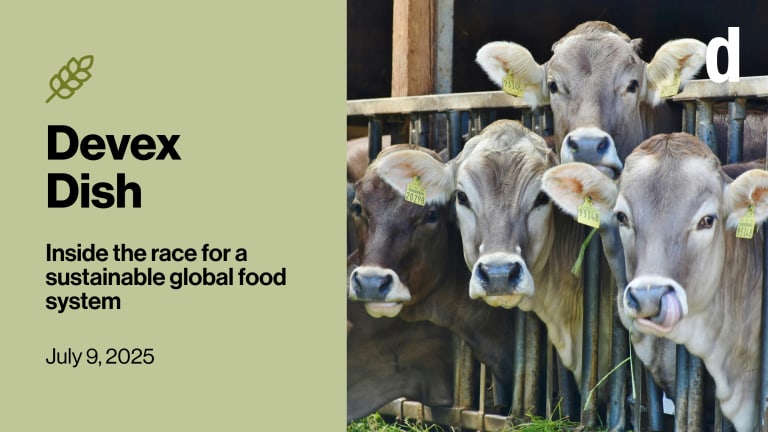
NAIROBI — Over the weekend, the first confirmed case of Ebola was discovered in Goma, a city in eastern Democratic Republic of the Congo.
The capital city of North Kivu province, Goma is a major transport hub for the region, with a population of about two million. It is the biggest city yet to be affected by the outbreak that began almost a year ago, infecting more than 2,400 people so far and killing more than 1,500.
“At the moment, the response overall is not adequately financed. We need a larger commitment by the international powers.”
— Dr. Emanuele Capobianco, global director of health and care, IFRCThe infected man, a pastor who was moving around the region on an evangelical mission, arrived in Goma Sunday morning on a bus from Butembo — a hotspot for the outbreak. He was confirmed as suffering from Ebola later that afternoon.
According to the ministry of health, the man was transported back to Butembo for treatment and his contacts were traced. Because of the rapid containment of the patient, the risk of the disease spreading to the rest of the city is weak, the government said.
Devex spoke with Dr. Emanuele Capobianco, global director of health and care at the International Federation of Red Cross and Red Crescent Societies, about the development.
The conversation has been edited for length and clarity.
What is the significance of this first case in Goma?
The discovery of a case in Goma didn’t come as a total surprise. We always knew this could happen — but it has taken a year. The positive news is that the case was identified early and the contacts were traced. Hopefully, this will prevent further spread of the disease in Goma.
Partners have been preparing for this eventuality and there are systems in place.
More on Ebola:
► UK steps up funding for Ebola response, tells other donors situation is 'on a knife-edge'
► Ebola responders call for a 'reset' in the response. What does that mean?
For instance, the Red Cross is already conducting [safe] burials of people suspected of having Ebola. It’s been doing so in Goma for several weeks and months … though we know we will need more teams and probably more resources to support those efforts now that we are no longer in a preparedness phase. We are now in a response phase in Goma.
When Ebola hit Monrovia, Liberia, during the 2014 outbreak, it was a turning point in the spread of the disease. Goma is a similar-sized city. If more cases are found, could it become a turning point that leads to a large increase in cases?
Certainly the presence of a virus like Ebola in a city of that size is extremely concerning. Should this small case not be fully contained, the consequences could be serious. But I am confident the response has been initiated promptly. I’m hopeful that we won’t see many cases, though we cannot exclude that at this point.
When Ebola crossed over into Uganda, the response was very prompt and successful. Because of that, we have not seen new cases over there. The bet now is on whether this is going to happen in Goma or not. We will see over the next few weeks.
Goma is about 20 minutes from the border with Rwanda. Is Rwanda prepared?
Rwanda has been preparing for this eventuality for a number of months and I have confidence that their level of preparedness is adequate to manage a threat of this kind. I’m more concerned about the ability to control a potential spread within Goma.
What would be the biggest barriers to containing a spread in Goma?
I see two barriers. People in Goma are condensed in a small space. That is a propeller for the transmission of the virus.
Then there is the social element that could contribute to the spread. If people are afraid and become resistant [to treatment], this could magnify the transmission. This means that people who are sick could run away because they don’t trust the system. While running away, they could infect many more people.
People could be afraid of the people who are responding to the disease. Instead of going to them to seek help, they could attack them physically, threaten them, and block their work.

In your opinion, is this response funded adequately enough to prevent further large-scale spreading of the virus?
The response from me is a resounding no. At the moment, the response overall is not adequately financed. We need a larger commitment by the international powers. We have seen in recent weeks, governments taking major steps, mainly the U.K. government, under the leadership of the U.K. secretary of state [for international development].
This response is not going to end next week and it’s not going to end next month. It’s going to end several months from now, only if it’s sustained financially, which it is not for the moment.
Could low levels of funding contribute to a larger outbreak in Goma?
The lack of funding could decrease the activities that are proven to be curbing the epidemic. This could decrease the extent and the quality [of the response].
August 1 marks one year since the declaration of the outbreak. Reflecting on the past year, do you think the response is on the right track? If not, what needs to be changed?
The response has been so far successful in containing the outbreak within the DRC, with the exception of Uganda. That is a positive element. But it has not been able to bring the number of cases down. On the contrary, the numbers have increased in recent months.
What is needed, in my opinion, are three things. One, the response must be broader than Ebola in addressing other health needs and the other humanitarian needs of people affected, because that will win their trust.
Second, we need to strengthen the resilience of the health systems. We had an outbreak in Beni that was successfully contained and then several months later new cases came again and now it’s the epicenter. This is a signal that we are not building enough resilience in the system. Unless we do that, it limits the capacity for us to do early detection and response to any new cases. We will be running after a virus that moves faster than we do.
Third, we need to get communities much more involved in the response. We need to use people from the communities as part of the response. The Red Cross does so, using volunteers that come from the community. We need to use the survivors as an element that can bring more community support for the response.








